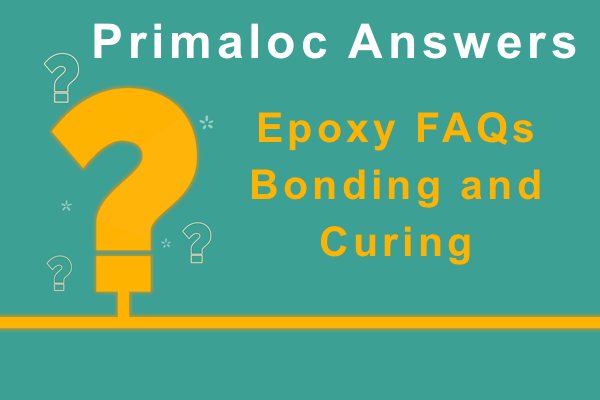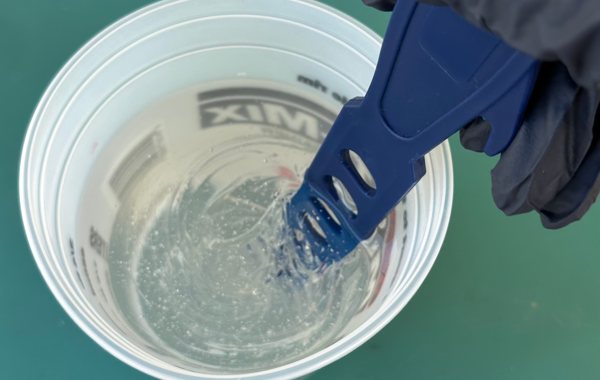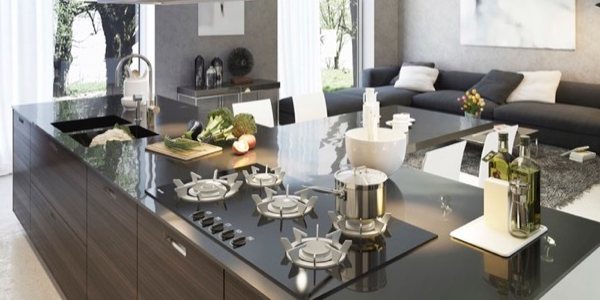The curing and bonding process of epoxy resin is perhaps the least intuitive phase. Among most users, who naturally are more interested in the end result rather than the intricate chemical transformations involved, "It just works" is a common sentiment.
That being said, there are reasons to have some understanding about what's going on here, in terms of how curing works as well as what epoxy can bond to and what it can't.
In this segment, we'll address some of the additional inquiries we occasionally receive regarding the specifics of epoxy resin's curing and bonding mechanisms.
This is Part 2 of our Bonding and Curing FAQs. Click here to see which questions we answered in the first part!
Epoxy Bonding and Curing FAQs
In this batch of FAQs, we'll answer the following questions:
- Is it possible to apply epoxy over granite?
- Can resin be poured directly onto glass?
- Is epoxy compatible with Formica surfaces?
- Does fresh epoxy adhere to cured or curing epoxy without sanding?
- What are the best practices for enhancing epoxy adhesion?
- What causes epoxy to remain tacky 24 hours after application?
- Why is my epoxy sticky a week after curing started?
- What's the recommended sealing process for epoxy countertops?
Let's take a look at each of these questions, starting with the first.
FAQ #1: Is It Possible to Apply Epoxy Over Granite?
Yes, it is.
Epoxy resin is ideal as a sealant for granite surfaces, which are normally very porous and prone to staining and retaining germs. Upon application, the epoxy provides the granite with a waterproof seal that prevents staining and other types of damage, and preserving it for years and years to come.
In nearly every case, it is strongly recommended that an epoxy seal coat be applied to a granite substrate prior to pouring on a typical flood coat. This will help seal the pores and prevent air bubbles showing up later.
Our Primaloc Bar & Table Top Epoxy is a premium-grade resin designed for materials like granite.
FAQ #2: Can Resin Be Poured Directly Onto Glass?
Yes, it can.
Epoxy resin will easily bond with glass and can be poured onto it as desired. For a stronger bond, give the glass a light sanding before you apply the epoxy coating.
FAQ #3: Is Epoxy Compatible with Formica Surfaces?
Yes, Formica laminate and similar materials are all highly compatible with a good epoxy resin.
Learn more about compatible materials in our guide to the subject.
FAQ #4: Does Fresh Epoxy Adhere to Cured or Curing Epoxy Without Sanding?
Yes, though depending on the state of the original epoxy, you may need to sand first.
If the existing epoxy layer is not fully cured and is still somewhat tacky or soft, then adding another layer should integrate well, allowing the two layers to bond and cure together seamlessly. In most cases, this refers to epoxy that has been curing between 4 to 10 hours. Beyond that is when it gets a little more involved.
On the other hand, if the previous epoxy layer has completely cured, it will feature a smooth, non-porous surface that new layers will struggle to bond to. This issue can be fixed by lightly sanding the cured epoxy. This will provides a textured surface that the new epoxy can mechanically grip onto, ensuring a strong bond that won't break down later on.
FAQ #5: What Are the Best Practices for Improving Epoxy Bond Strength?
The easiest way to guarantee the strongest possible bond for your epoxy coating is to give your substrate a sanding before you apply it. Sanding creates tiny, imperceptible grooves in the substrate that epoxy can permeate, using them like a grip once it cures and hardens.
FAQ #6: What Causes Epoxy to Remain Tacky 24 Hours After Application?
The tackiness of epoxy after 24 hours typically stems from incorrect measurement of the components or poor curing conditions.
For accurate measuring, precise tools are essential. Using graduated mixing containers can significantly reduce the margin of error by providing exact measurements for each component. These containers are available in various sizes, such as 1-quart and 5-quart options, which you can find in our store.
As for the curing environment, the temperature and humidity levels play pivotal roles.
Temperature
Epoxy resin generally cures optimally at a temperature around 75°F. Ensuring your workspace is within a few degrees of this temperature can facilitate proper curing.
Humidity
Additionally, epoxy resin requires a low-humidity environment to cure correctly. Aim to keep the humidity under 60% to prevent prolonged tackiness and ensure a steady curing process.
FAQ #7: Why Is My Epoxy Sticky a Week After Curing Started?
If your epoxy remains sticky after a week, the likely culprits are incorrect mixing ratios or less-than-ideal curing conditions, similar to the issues highlighted above in Question 6.
Accurate measurement is crucial when mixing epoxy components, as the ratios can differ depending on the brand and specific product type. Always refer to the manufacturer's guidelines for the correct proportions. For instance, while our Primaloc Bar & Table Top Epoxy requires a 1:1 mix, other brands might specify 2:1, 3:1, or even 5:1 ratios.
Environmental conditions also significantly impact epoxy curing. Maintaining a curing environment with a temperature around 75°F and a humidity level under 60% is essential for the epoxy to cure properly and not remain sticky.
FAQ #8: What Should You Seal Epoxy Countertops With?
Typically, epoxy itself acts as the sealant for countertops. If you're looking to enhance the protection or refresh the surface, applying another layer of epoxy as a topcoat is usually the way to go.
If your question refers to preparing the substrate before applying the main flood coat of epoxy, you would start with a thin seal coat of epoxy. This initial layer helps to minimize air bubbles and ensures a more robust and flawless final finish.
For adding an extra layer of protection or renewing the surface, you would lightly sand the cured epoxy to create a surface that the new layer can adhere to effectively. After sanding, apply the fresh topcoat of epoxy. When done correctly, this new layer should bond well with the sanded surface, curing to a smooth and revitalized finish.
Primaloc Epoxy: Premium Epoxy for Premium Results
When it comes to epoxy resin, Primaloc Epoxy gets the job done. Our epoxy resin is premium-grade, with high performance in every category, including:
- Unmatched Strength: A Primaloc finish won't buckle, even under high pressure.
- Long-Lasting Resilience: Primaloc epoxy lasts for many years with minimal care, and can endure high-traffic environments with ease.
- A Crystal-Clear Coating: With its pristine, transparent appearance, looking at a cured Primaloc coating is like peering through a window.
Epoxy resin can be beautiful, strong, and long-lasting—which is why you shouldn't compromise on quality. With Primaloc Epoxy Resin, you get the ultimate finish in durability and visual appeal.
Protect your surfaces by giving them a rock-solid epoxy finish. Choose strong. Choose reliable. Choose Primaloc.







